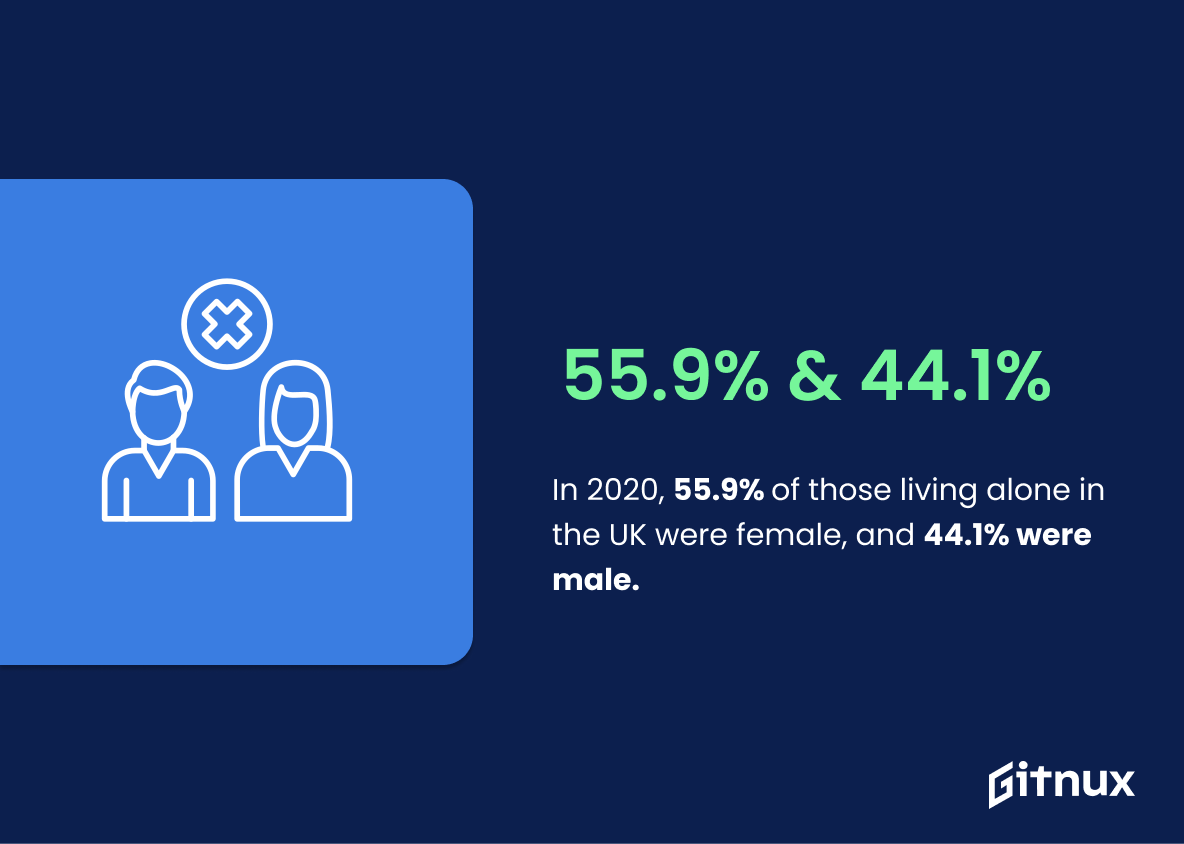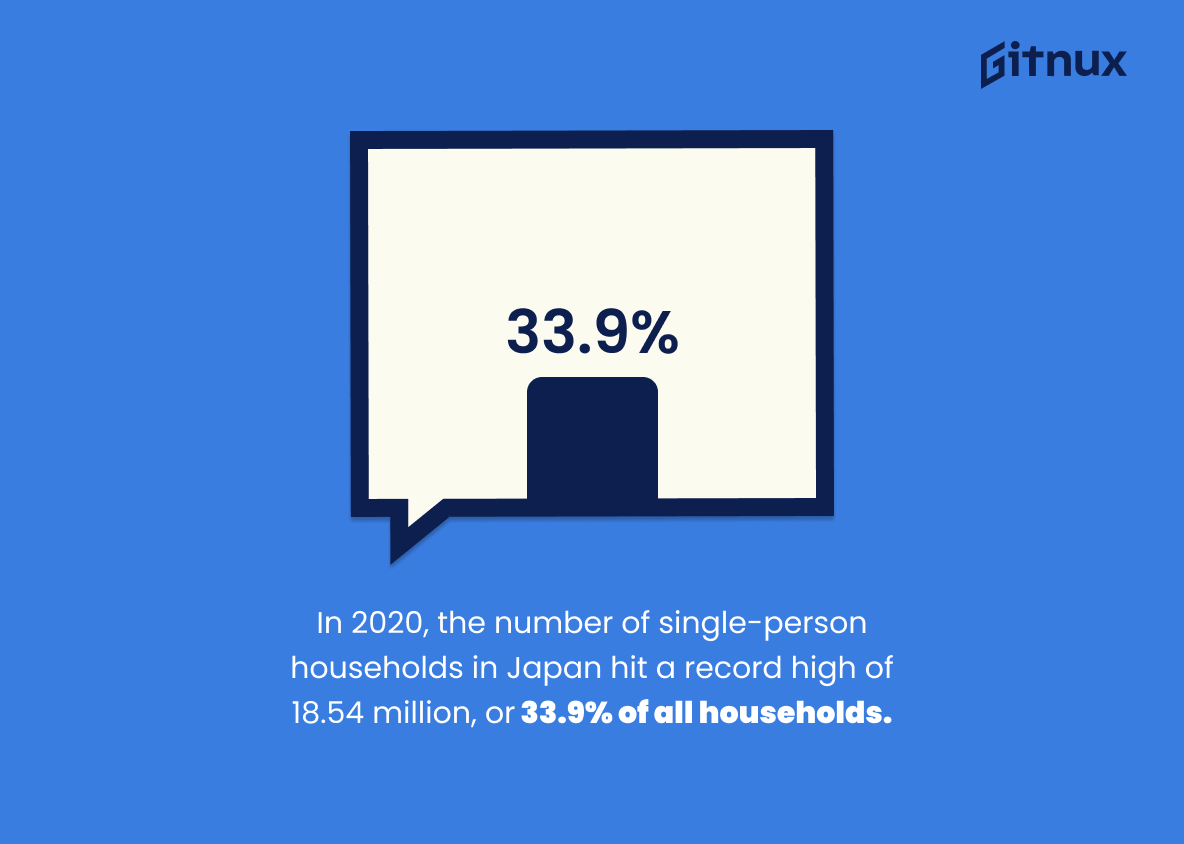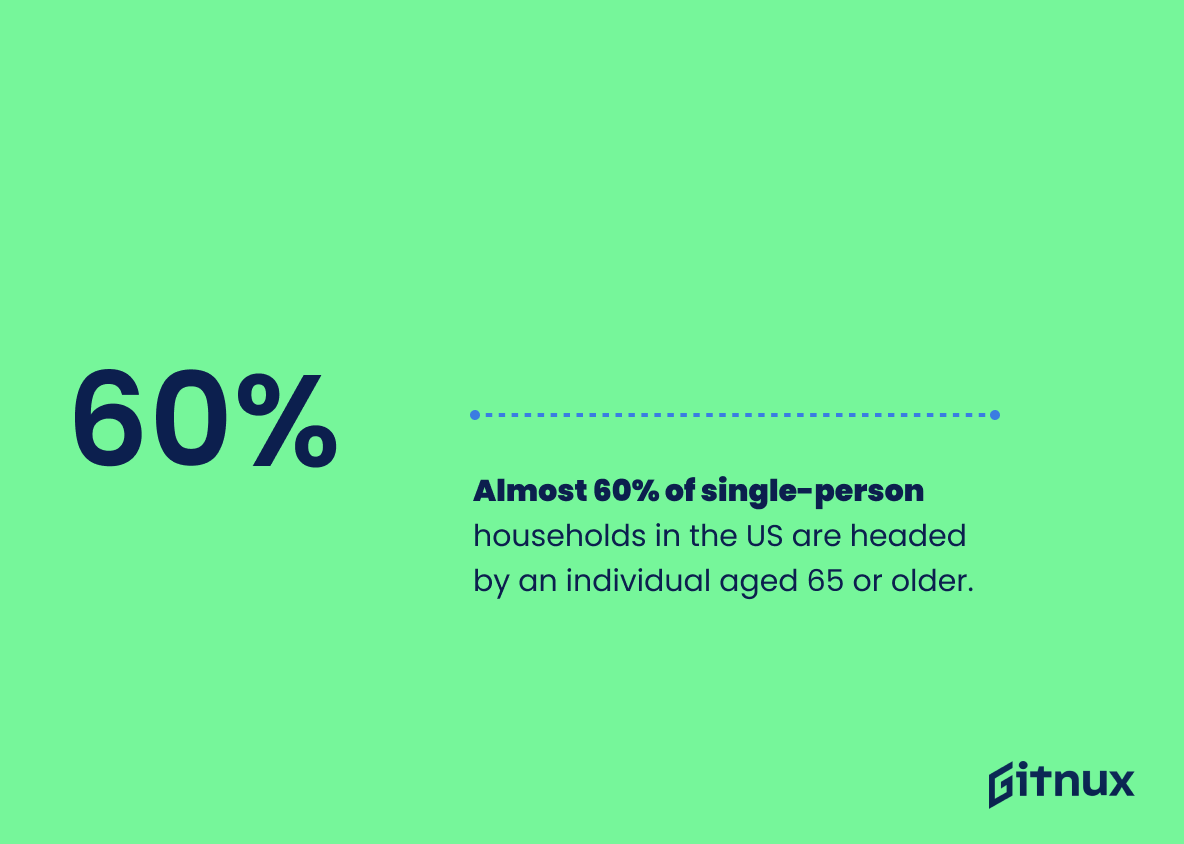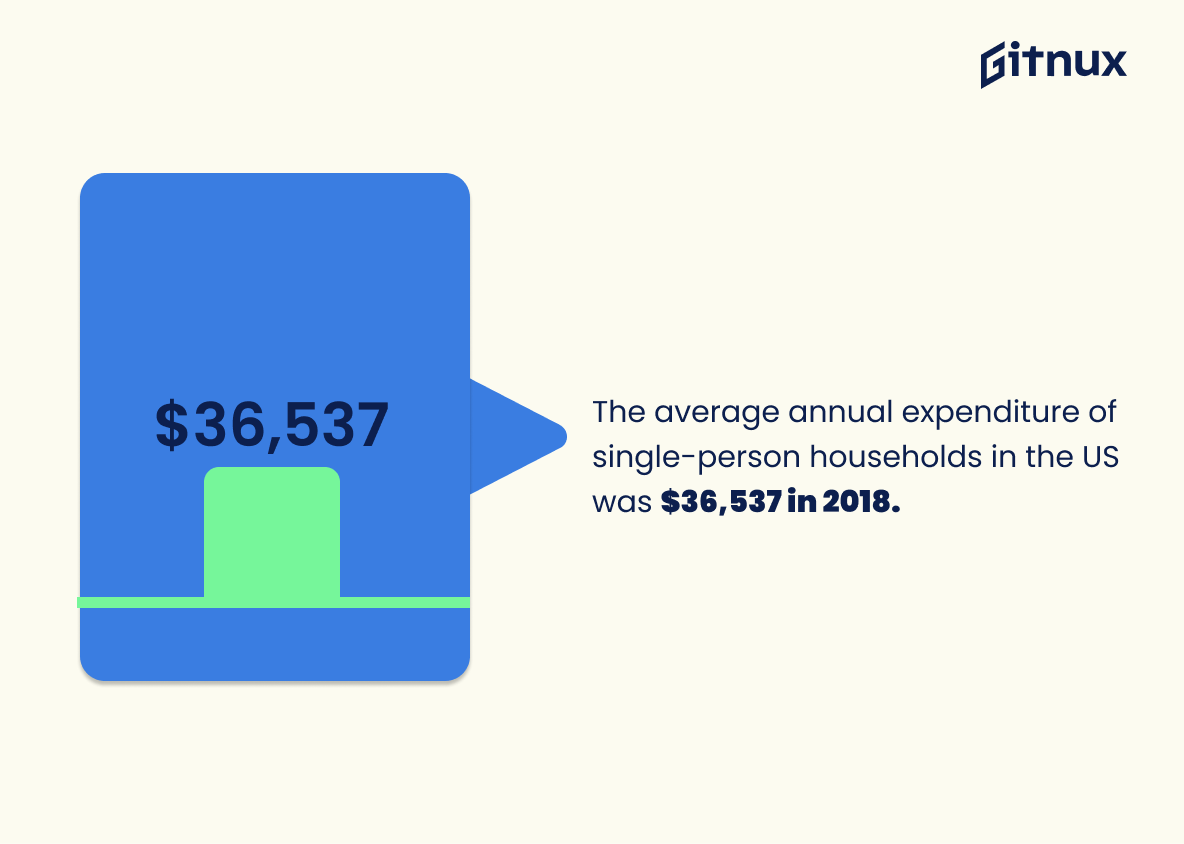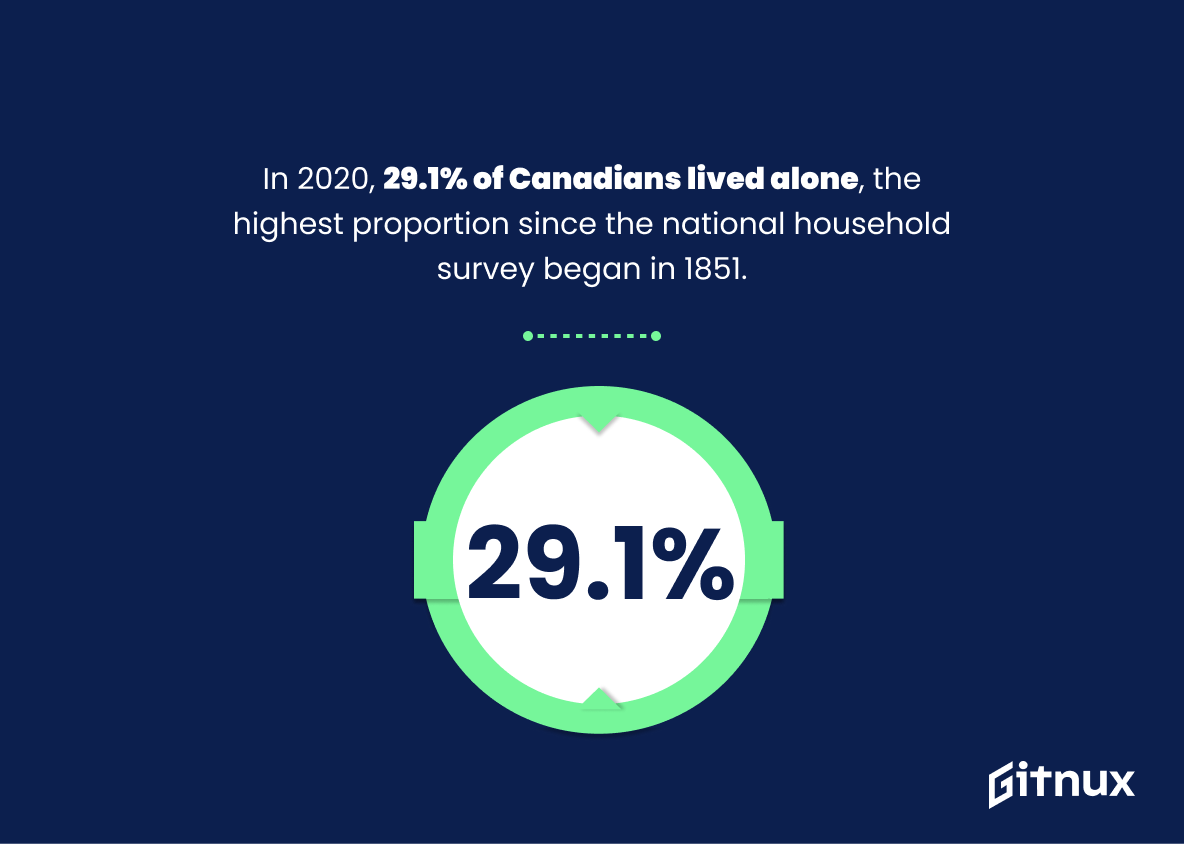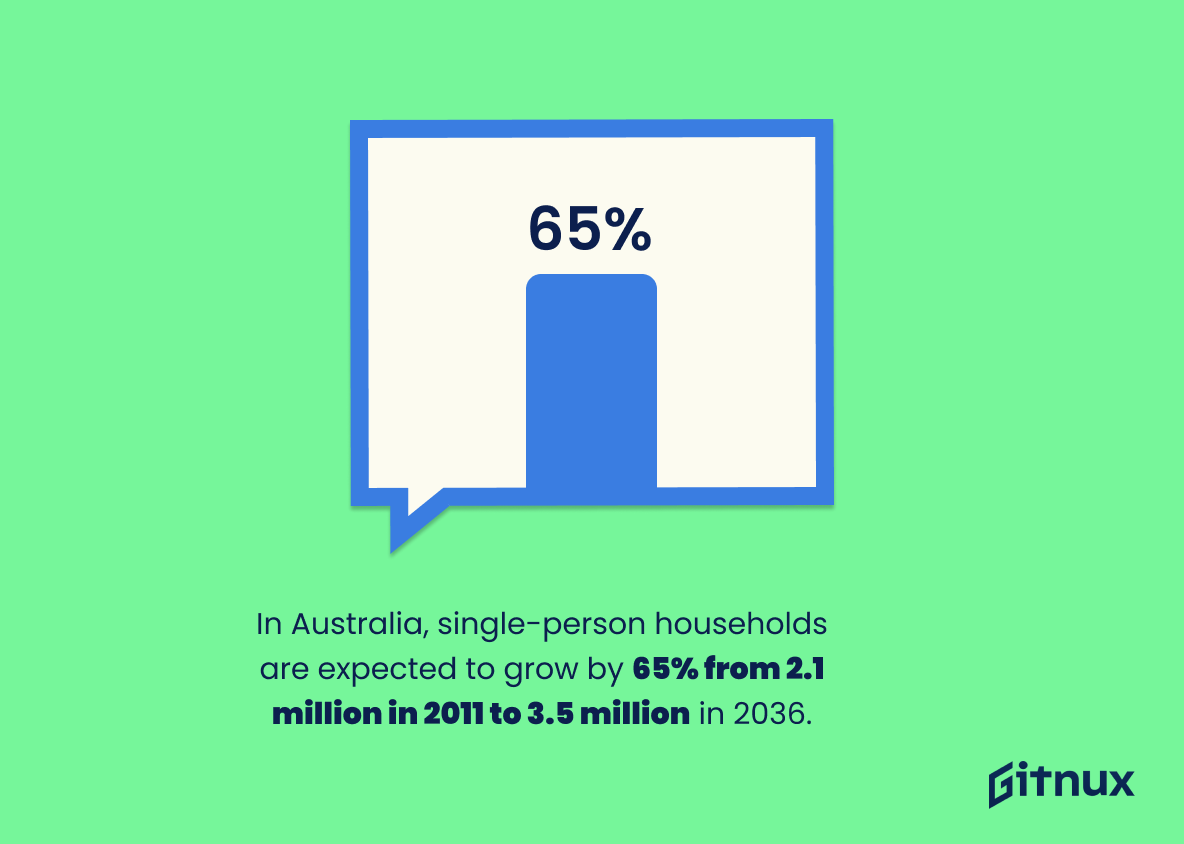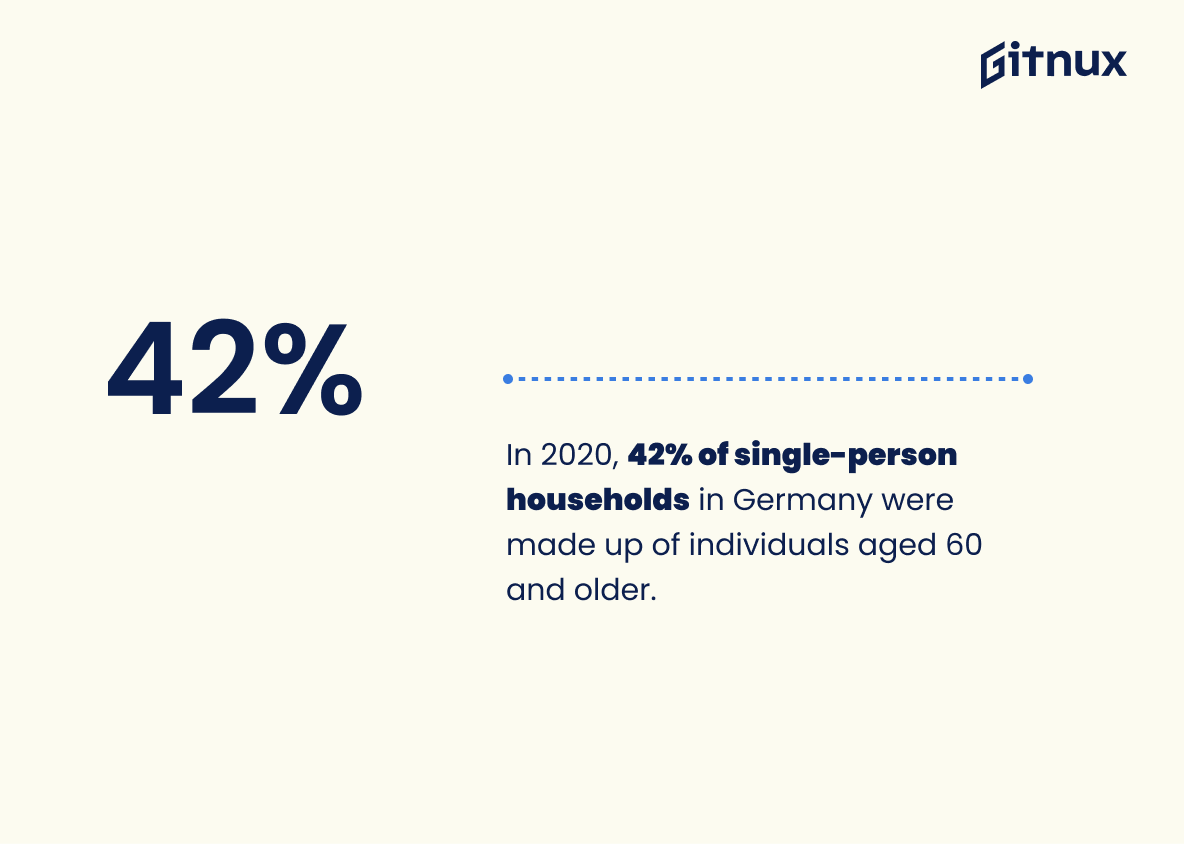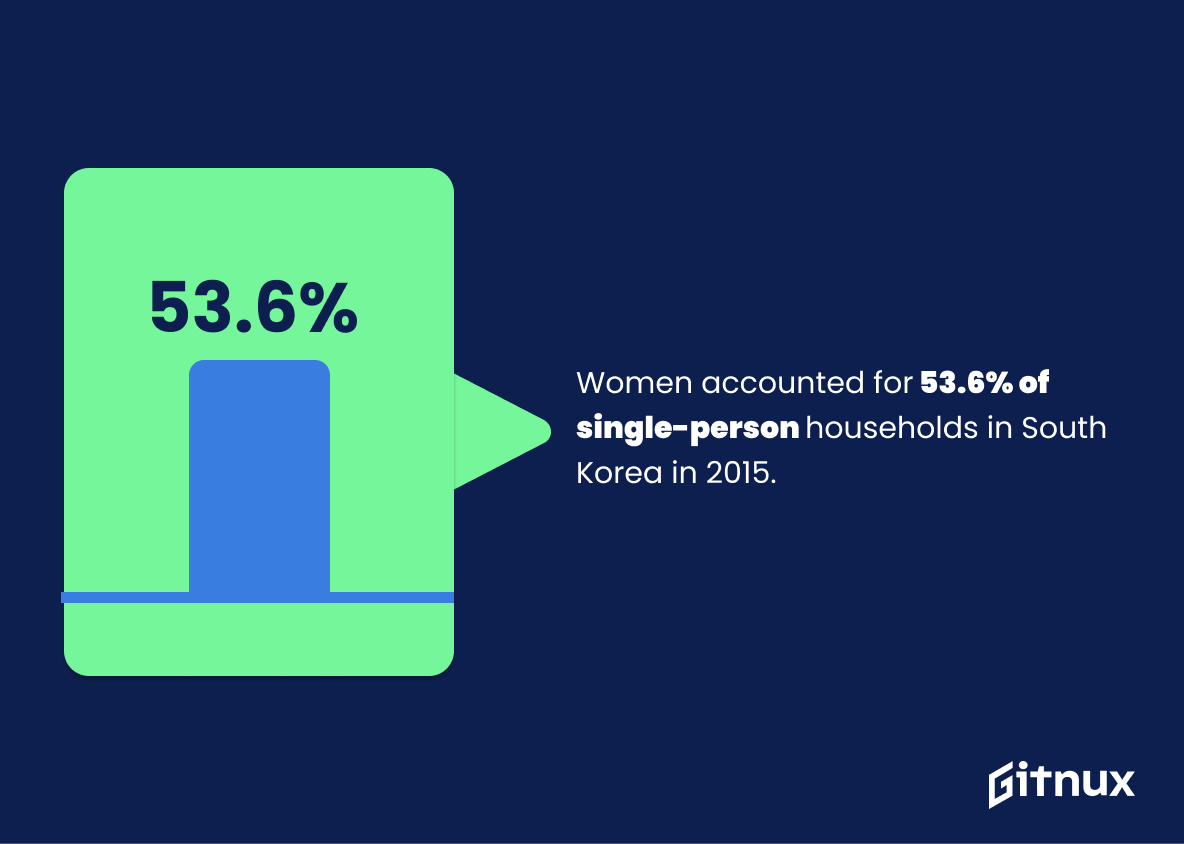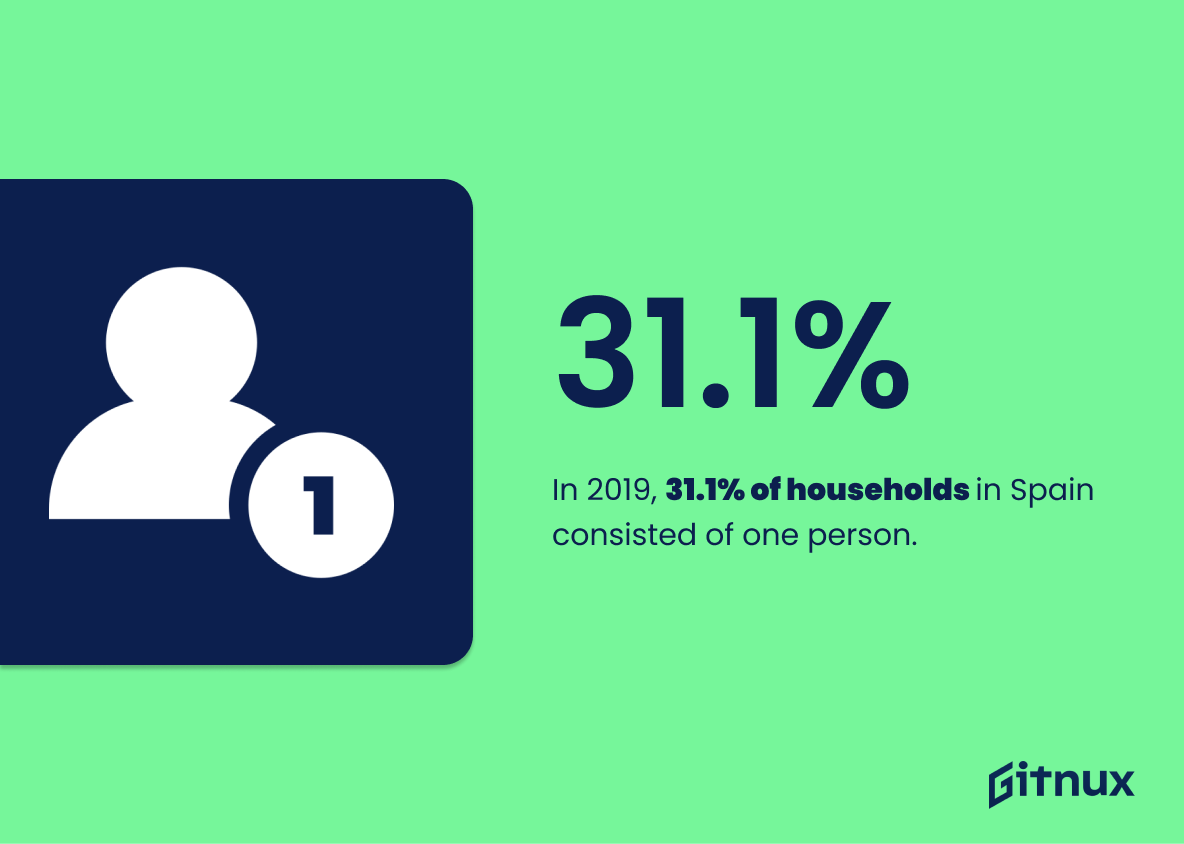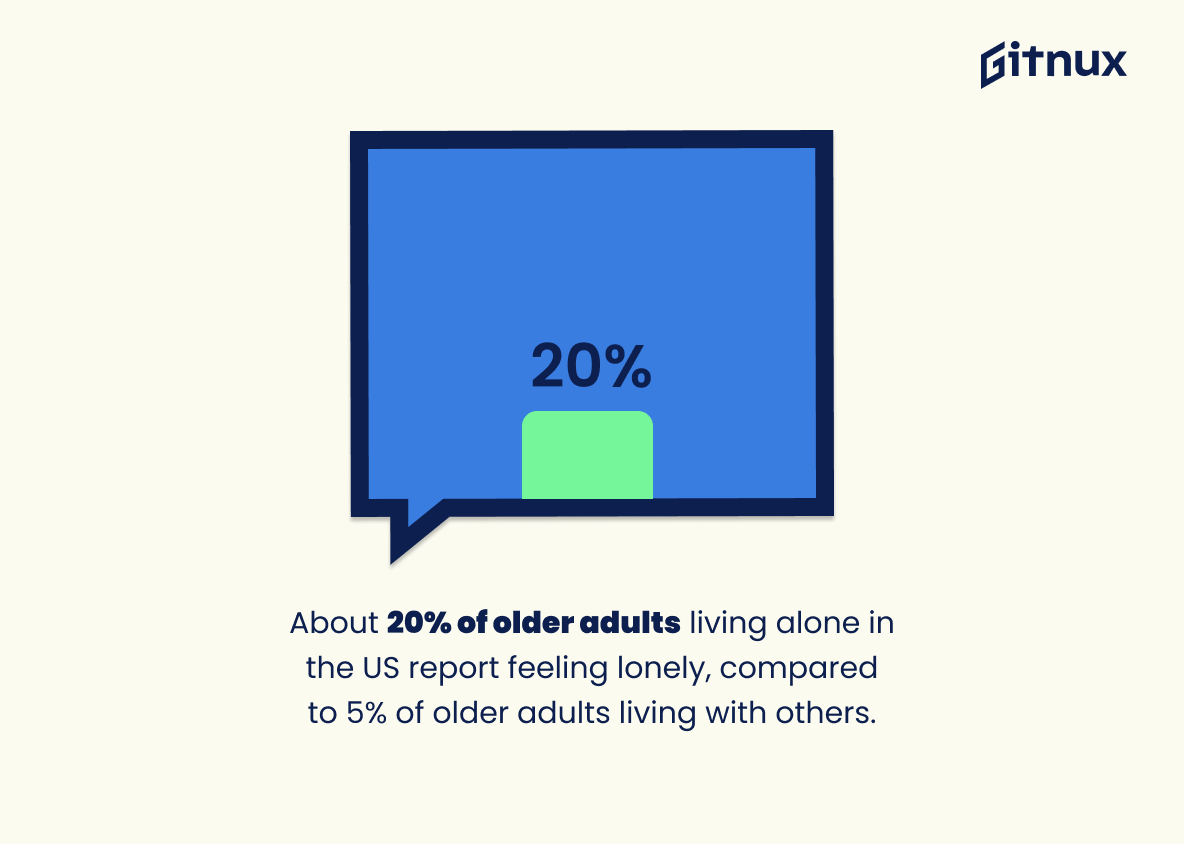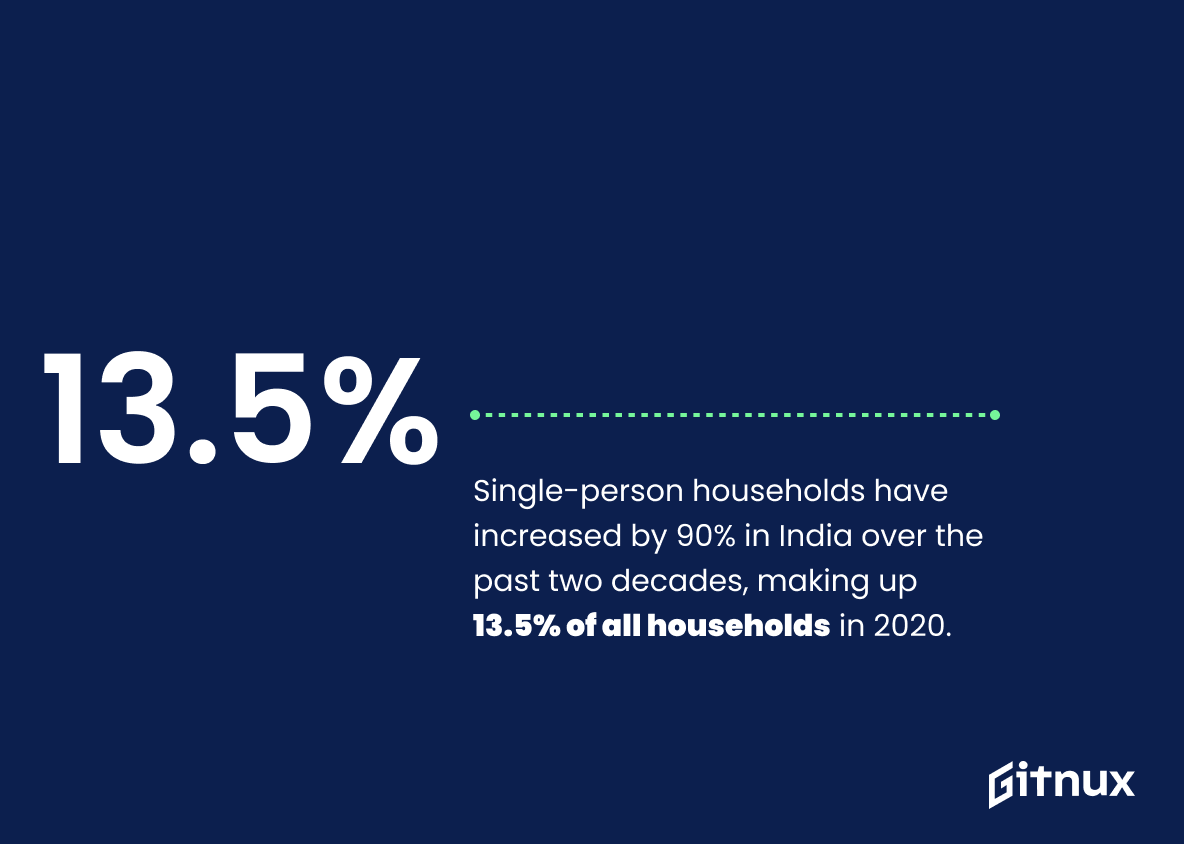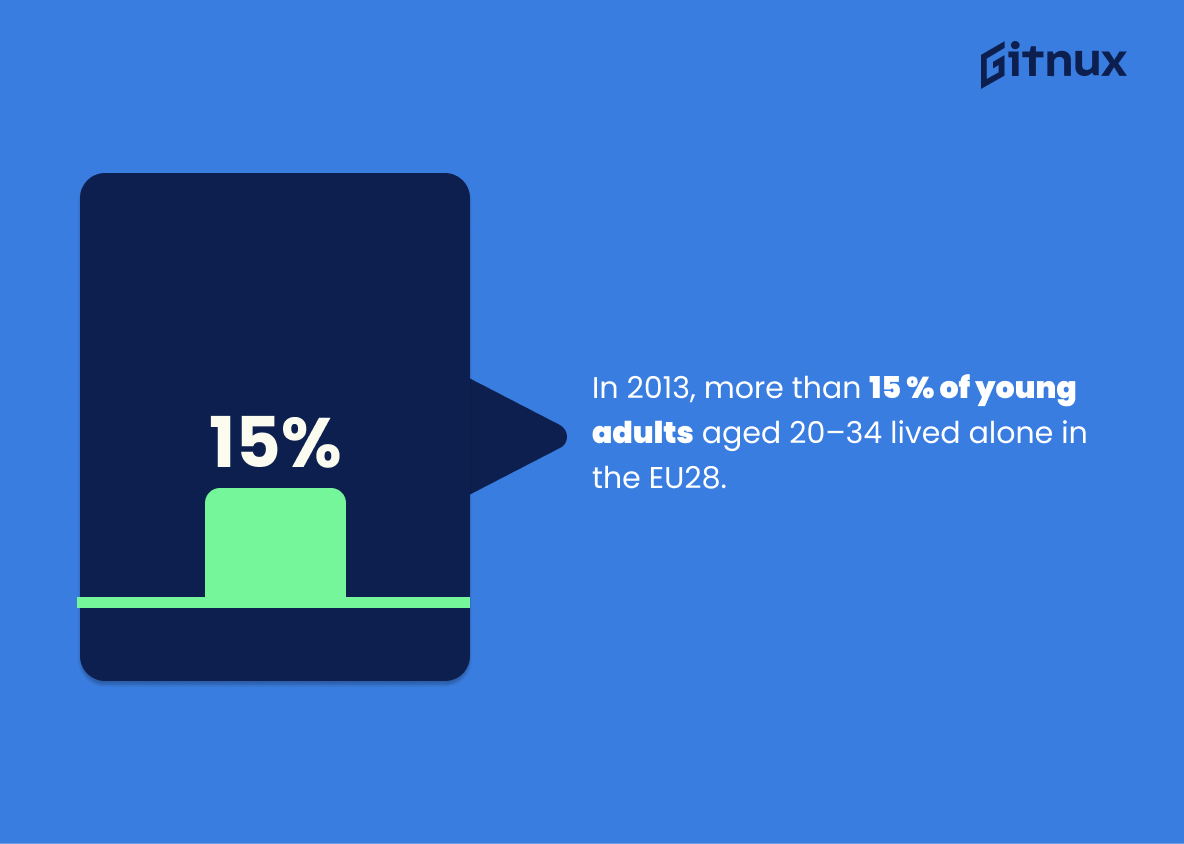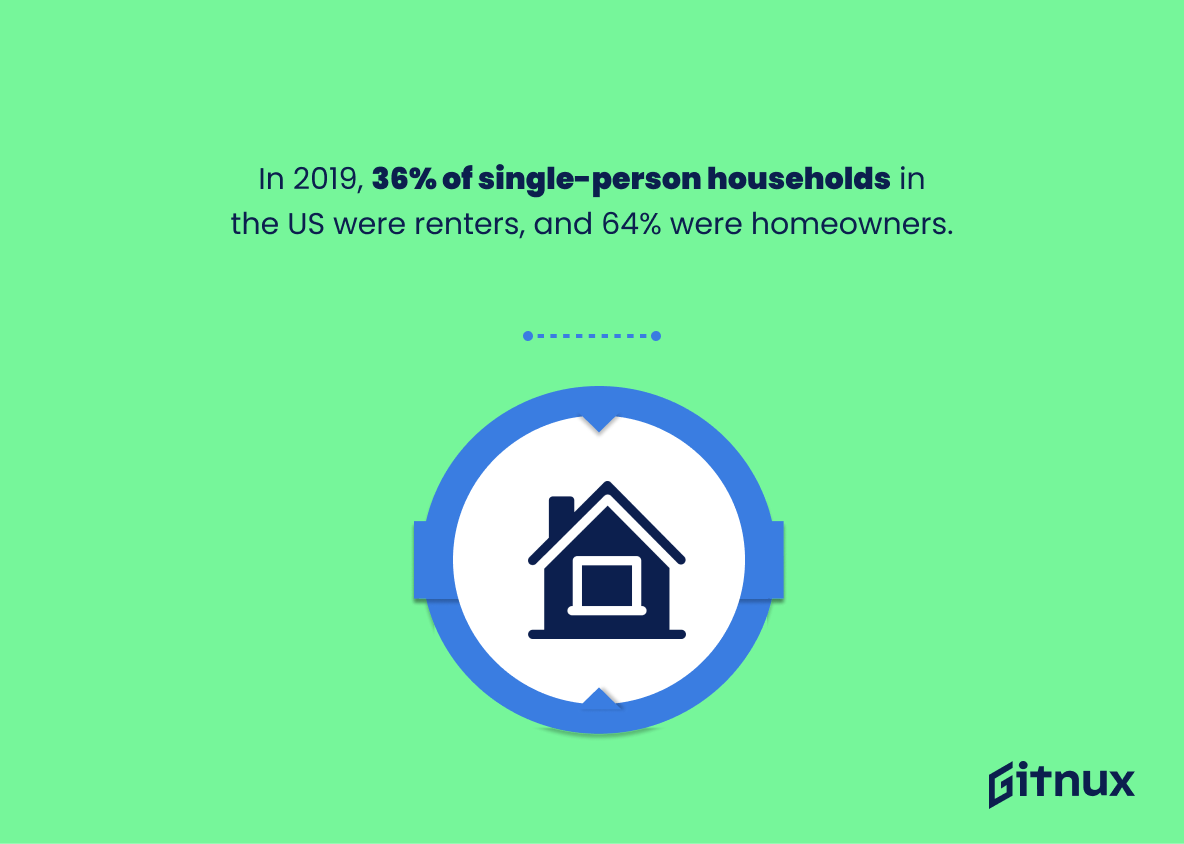Living alone is becoming increasingly common around the world. In this blog post, we will explore some of the latest statistics on living alone from countries across the globe. We’ll look at how many people are living alone in different parts of the world, as well as their age and gender breakdowns, average annual expenditures, and more. Additionally, we’ll discuss potential risks associated with single-person households such as social isolation and loneliness. Read on to learn more about these fascinating trends.
This statistic is a powerful indicator of the changing landscape of living arrangements in the United States. It speaks to the growing trend of individuals choosing to live alone, whether due to financial independence, lifestyle preferences, or other factors. It also highlights the need for increased support and resources for those living alone, as well as the potential for increased loneliness and isolation.
28.5% of all households in the European Union consist of one person.
This statistic is a powerful indicator of the growing trend of single-person households in the European Union. It highlights the fact that more and more people are choosing to live alone, whether it be for financial reasons, lifestyle choices, or other factors. This statistic is important to consider when discussing the implications of living alone, as it provides a snapshot of the current state of affairs in the EU.
Living Alone Statistics Overview
In 2019, it was reported that 35.7 million Americans lived alone, representing 28% of all US households.
This statistic is a powerful indicator of the growing trend of living alone in the United States. It shows that a significant portion of the population is choosing to live independently, which has implications for the economy, housing market, and social dynamics. It is an important statistic to consider when discussing the pros and cons of living alone.
People living alone are more likely to experience social isolation and loneliness, which can increase the risk of premature mortality by around 30%.
This statistic is a stark reminder of the potential dangers of living alone. It highlights the fact that social isolation and loneliness can have a serious impact on one’s health, increasing the risk of premature mortality by a significant amount. This is an important point to consider when discussing the realities of living alone, and should be taken into account when discussing the pros and cons of this lifestyle.
In 2020, 55.9% of those living alone in the UK were female, and 44.1% were male.
This statistic is a telling indication of the gender disparity in the UK when it comes to living alone. It highlights the fact that more women are living alone than men, which could be due to a variety of factors such as economic inequality, social norms, or even cultural expectations. This statistic is important to consider when discussing the implications of living alone, as it can provide insight into the unique challenges faced by women who are living alone.
In 2020, the number of single-person households in Japan hit a record high of 18.54 million, or 33.9% of all households.
This statistic is a telling indication of the changing landscape of Japanese households. It highlights the growing trend of single-person households, which is a reflection of the changing social dynamics in Japan. This statistic is important to consider when discussing the implications of living alone, as it provides insight into the increasing number of people who are choosing to live alone.
Almost 60% of single-person households in the US are headed by an individual aged 65 or older.
This statistic is a stark reminder of the growing number of elderly individuals who are living alone in the US. It highlights the need for increased support and resources for this demographic, as well as the need for greater awareness of the challenges they face.
The average annual expenditure of single-person households in the US was $36,537 in 2018.
This statistic is a telling indication of the financial burden that single-person households in the US face. With an average annual expenditure of $36,537, it is clear that living alone can be a costly endeavor. This figure highlights the need for single-person households to be mindful of their spending and to budget accordingly.
In 2020, 29.1% of Canadians lived alone, the highest proportion since the national household survey began in 1851.
This statistic is a remarkable indication of the changing landscape of Canadian households. It speaks to the increasing prevalence of single-person households, which has been steadily rising since the national household survey began in 1851. This trend is significant, as it reflects the changing dynamics of family life in Canada, and the growing number of people who are choosing to live alone. It is an important statistic to consider when discussing the implications of living alone, and the impact it has on individuals and society as a whole.
Nearly 50% of all single-person households in Sweden have an occupant aged 65 or older.
This statistic is a stark reminder of the growing number of elderly people living alone in Sweden. It highlights the need for increased support and resources for those who are aging alone, as well as the need for greater awareness of the challenges faced by this demographic. It also serves as a reminder of the importance of creating a supportive environment for those who are living alone, regardless of age.
In Australia, the number of single-person households is projected to increase by 65% from 2.1 million in 2011 to 3.5 million in 2036.
This statistic is a powerful indicator of the changing landscape of Australian households. It highlights the growing trend of single-person households, which is likely to have a significant impact on the way people live and interact with each other. As the number of single-person households increases, it is likely to lead to an increase in loneliness and isolation, as well as a decrease in social interaction. This could have a negative effect on mental health and wellbeing, as well as on the economy. It is therefore important to consider the implications of this statistic when discussing the topic of living alone.
In 2020, 42% of single-person households in Germany were made up of individuals aged 60 and older.
This statistic is a telling indication of the growing trend of older individuals living alone in Germany. It highlights the need for more support and resources for this demographic, as they are more likely to face loneliness and other challenges associated with living alone. It also speaks to the changing dynamics of family life in Germany, as more and more people are choosing to live alone.
Women accounted for 53.6% of single-person households in South Korea in 2015.
This statistic is a telling indication of the growing trend of single-person households in South Korea. It highlights the fact that more and more women are choosing to live alone, which could be due to a variety of factors such as increased financial independence, changing social norms, or a desire for greater autonomy. This statistic is important to consider when discussing the implications of living alone, as it provides insight into the changing dynamics of households in South Korea.
In France, 35% of people living alone in 2020 were aged 65 and older.
This statistic is a stark reminder of the reality that many elderly people in France are living alone. It highlights the need for increased support and resources for those who are aging and living alone, as well as the need for greater awareness of the challenges they face.
In 2019, 31.1% of households in Spain consisted of one person.
This statistic is a telling indication of the growing trend of single-person households in Spain. It highlights the fact that more and more people are choosing to live alone, which has implications for the country’s economy, housing market, and social dynamics. It is an important statistic to consider when discussing the implications of living alone.
About 20% of older adults living alone in the US report feeling lonely, compared to 5% of older adults living with others.
This statistic is a stark reminder of the loneliness that can come with living alone. It highlights the importance of having companionship and support, especially for older adults, and the need for social connections to help combat feelings of loneliness.
Single-person households have increased by 90% in India over the past two decades, making up 13.5% of all households in 2020.
This statistic is a powerful indicator of the changing landscape of households in India over the past two decades. It highlights the growing trend of single-person households, which now make up 13.5% of all households in 2020. This shift in living arrangements has implications for the way people live, work, and interact with one another, and is an important factor to consider when discussing the pros and cons of living alone.
In 2013, more than 15 % of young adults aged 20–34 lived alone in the EU28.
This statistic is a telling indication of the growing trend of young adults living alone in the EU28. It highlights the fact that more and more young adults are choosing to live independently, away from family and friends, and that this is becoming increasingly common. This statistic is important to consider when discussing the implications of living alone, as it provides a snapshot of the current situation and can be used to inform further research and discussion.
In 2019, 36% of single-person households in the US were renters, and 64% were homeowners.
This statistic is a telling indication of the current state of living alone in the US. It reveals that a significant portion of single-person households are renters, suggesting that many people are unable to afford to purchase a home of their own. This highlights the financial challenges that come with living alone, and the need for more affordable housing options.
In 2020, nearly 65% of people living alone in the United States were White, 18% were African American, and 14% were Hispanic or Latino.
This statistic is a powerful reminder of the racial disparities that exist in the United States when it comes to living alone. It highlights the fact that the majority of people living alone are White, while African Americans and Hispanics or Latinos are significantly underrepresented. This is an important issue to consider when discussing the challenges and opportunities of living alone.
Conclusion
The statistics presented in this blog post demonstrate the growing trend of people living alone across the world. In 2020, single-person households made up a significant portion of all households in many countries including the United States (28%), European Union (28.5%), Japan (33.9%) and India (13.5%). People living alone are more likely to experience social isolation and loneliness which can increase their risk of premature mortality by around 30%. Additionally, it was found that women accounted for over half of single-person households in South Korea while older adults aged 65 or above make up a large proportion of those living alone in Sweden, Germany and France as well as nearly 60% among US citizens. Furthermore, 36% were renters while 64% were homeowners amongst US single-person households; whereas 15 % young adults aged 20–34 lived alone within EU 28 nations back in 2013 with an average annual expenditure amounting to $36 537 per household during 2018 according to BLS reports from USA . Finally, White individuals constituted 65%, African Americans 18%, Hispanic/Latino 14% respectively out of total population who live solo within America’s boundaries at present time period
References
0. – https://www.statcan.gc.ca
1. – https://www.ons.gov.uk
2. – https://www.japantimes.co.jp
3. – https://www.kosis.kr
4. – https://www.abs.gov.au
5. – https://www.bls.gov
6. – https://www.destatis.de
7. – https://www.census.gov
8. – https://www.insee.fr
9. – https://www.eurofound.europa.eu
10. – https://www.ncbi.nlm.nih.gov
11. – https://www.ine.es
12. – https://www.timesofindia.indiatimes.com
13. – https://www.scb.se
14. – https://www.statista.com
15. – https://www.aarp.org
16. – https://www.ec.europa.eu
17. – https://www.nia.nih.gov
